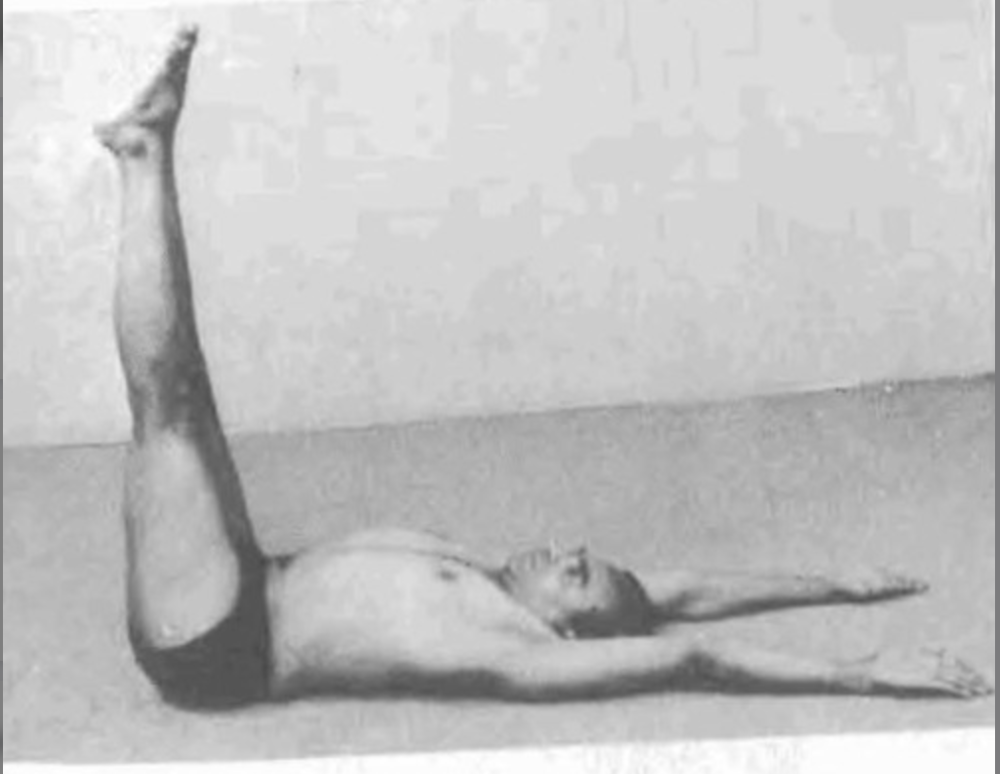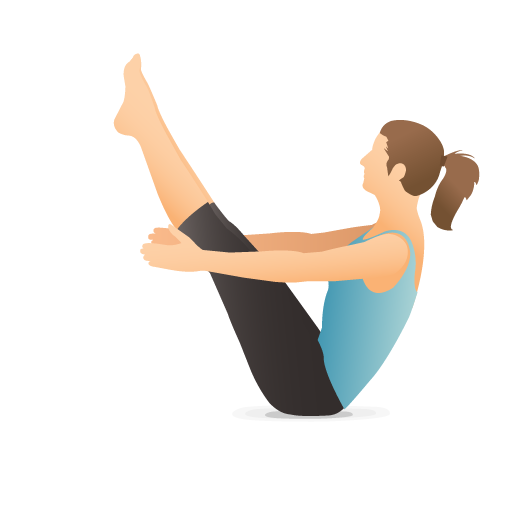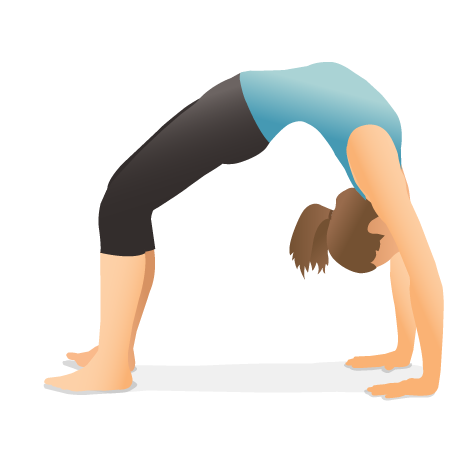
1. Urdhva Prasarita Padasana
(Urdhva mean upright, above, high. Prasarita means extended, stretched out. Pada means foot.) Yoga for Acidity

How to:
- Lie flat on the back keeping the legs stretched out and tightened at the knees. Place the hands by the side of the legs.
- Exhale, move the arms over the head and stretch them out straight.
- Raise the legs up from the floor to 30 degrees and hold the pose for 15-20 seconds with normal breathing.
- Exhale, move the legs up to 60 degrees and hold for 14-20 seconds with normal breathing.
- Again exhale, move the legs higher still to the perpendicular and hold it for 30-60 seconds with normal breathing.
- Now exhale, lower the legs slowly to the floor and relax.
Repeat 3-4 times from position 2-6 as needed
Effects
This asana is a wonderful exercise for reducing fat around the abdomen. It strengthens the lumbar region of the back, tones the abdominal organs, and relieves those suffering from gastric trouble and flatulence.
2. Padahastasana – Yoga for acidity
(Pada means the foot. Hasta means the hand. This posture is done by bending forward and standing on one’s hands.)

How to:
- Stand tall in mountain pose and spread the legs a foot apart.
- Exhale, bend forward and without bending the legs at the keens insert the hands under the feet so that the palms touch the soles.
- Keep the head up and make the back as concave as possible. Do not slacken the grip at the knees and take a few breaths in this position.
- Now exhale, and move the head in between the knees by bending the elbows and pulling the feet up from the palms. Stay in the pose for about 20 seconds with normal breathing.
- Inhale, raise the head and come half way up, with the head well up and looking forward. Take two breaths.
- Inhale, stand up and return to mountain pose.
Effects
The abdominal organs are toned and digestive juices increase, while the liver and spleen are activated. Those who suffer from a bloating sensation in the abdomen or from gastric troubles will benefit by practicing this pose. Do not bring the head in between the knees if you have a displaced disc. You will need assistance from an advanced teacher before trying this pose, because it may not be possible to achieve the concave back position immediately.
3. Bhujangasana- Yoga for acidity
(Bhujanga means a serpent. In this posture, lie flat on the floor, face downwards, lift the body up from the trunk and throw the head back like a serpent about to trike)

How to:
- Lie on the floor face downwards. Extend the legs, keeping the feet together. Keep the knees tight and the toes pointing.
- Rest the palms by the side of the pelvic region.
- Inhale, press the palms firmly on the floor and pull the trunk up. Take two breaths.
- Inhale, lift the body up from the trunk until the pubis us in contact with the floor and stay in this position with the weight on the legs and palms.
- Contract the anus and the buttocks, tighten the thighs.
- Maintain the pose for about 20 seconds, breathing normally.
- Exhale, bend the elbows and rest the trunk on the floor. Repeat the pose two or three times and then relax.
Effects
The posture is a panacea for an injured spine and in cases of slight displacement of spinal discs the practice of this pose replaces the discs in their original position. Stimulates appetite, the spinal region is toned and the chest fully expanded.
4. Paripurna Navasana – Yoga for pH imbalance
(Paripurna means entire or complete. The posture here resembles that of a boat with oars, hence the name.)

How to:
- Sit on the floor with the legs stretched straight in front. Place the palms on the floor by the hips, the fingers pointing to the feet. Stretch the hands straight and keep the back erect. This position is called Dandasana.
- Exhale, recline the trunk slightly back and simultaneously raise the legs from the floor and keep the stiff as a poker with the knees tight and the toes pointing forwards. Balance is maintained only on the buttocks and no part of the spine should be allowed to touch the floor, from which the legs should be kept at an angle of 60 to 65 degrees. The feet are higher than the head.
- Remove the hands from the floor and stretch the arms forward, keeping them parallel to the floor and near the thighs. The shoulders and the palms should be on one level, and the palms should face each other.
- Stay in the pose for half a minute, with normal breathing. Gradually increase the time to one minute. One feels the effect of the exercise after only 20 seconds.
- Then exhale, lower the hands, rest the legs on the floor and relax by lying on the back.
Effects
This asana gives relief to those who feel a bloating sensation in the abdomen due to gas and also to those suffering from gastric complaints. It reduces fat around the waistline and tones the kidneys.
5. Urdhva Dhanurasana -Yoga for acidity
(Urdhva means upwards. Dhanu means a bow. In this posture the body is arched back and supported on the palms and soles.) Yoga for acidity and pH imbalance.

How to:
- Lie flat on the back oh the floor.
- Bend and raise the elbows over the head, and place the palms under the shoulders. The distance between the palms should now be wider than the shoulders and the finders should point towards the feet.
- Bend and raise the knees, then bring the feet nearer until they touch the hips.
- Exhale, raise the trunk and rest the crown of the head on the floor. Take two breaths.
- Now exhale, lift the trunk and head and arch the back so that its weight is taken on the palms and the soles.
- Stretch the arms from the shoulders until the elbows are straightened, at the same time pulling the thigh muscles up.
- To get a better stretch, exhale and pull the thigh muscles still higher by lifting the heels off the floor. Extend the chest, stretch up the sacral region of the spine until the abdomen is taut as a drum and then lower the feels to the floor, maintaining the stretch of the spine.
- Remain in this position from half a minute to a minute, with normal breathing.
- With an exhalation, lower the body to the floor by bending the knees and elbows.
Effects
This pose is the beginning of the advanced and difficult back-bending poses. It tones the spine by stretching it fully and keeps the body alert and supple. The back feels strong and full of life. It strengthens the arms and wrists and has a very soothing effect on the head.
Don’t miss my Ujjayi pranayama post here!

